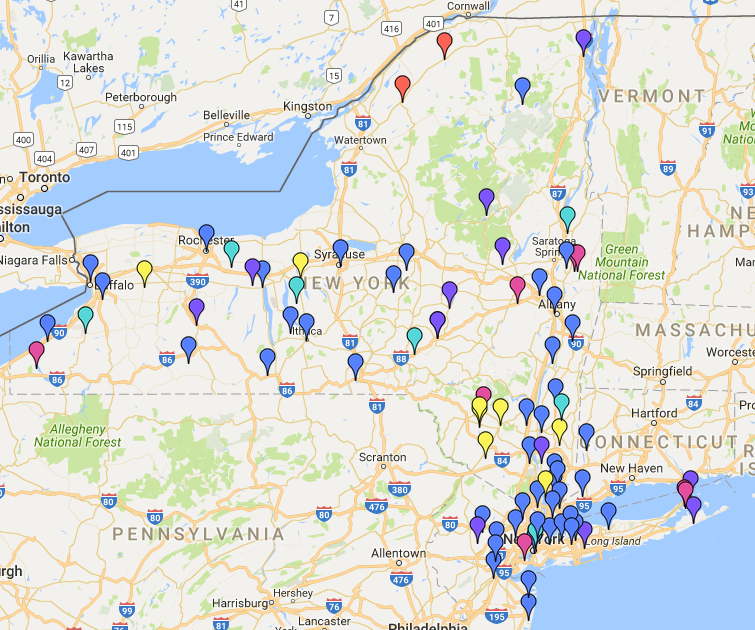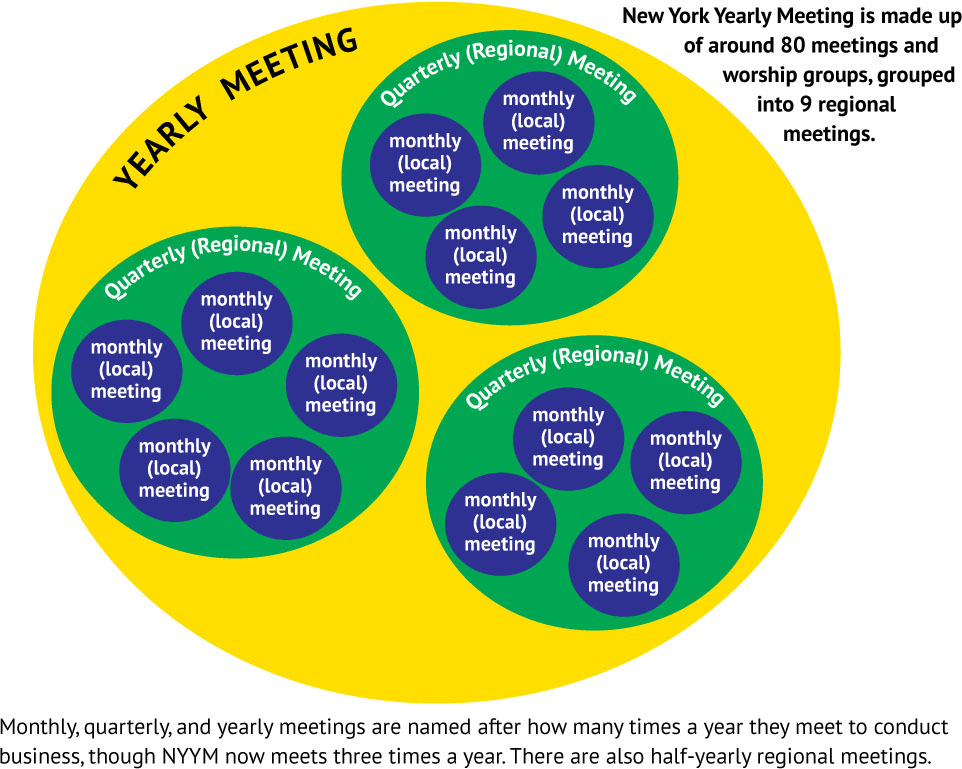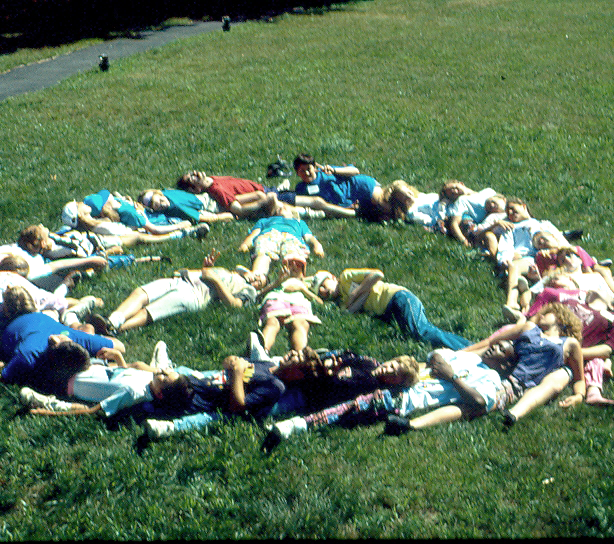Report: NYYM Representatives, FUM Board Meetings, Fall Sessions 2010
Report from the NYYM Representatives to the
Combined North American/ African FUM Board Meetings
Mabanga, Kenya, July 2010
Overview
It has been several years since either of us had been to Kenya. Much had changed. And much was still the same. The Kenyans exuded the same sense of deep faithfulness, the same profound joy in living. We were met with the same remarkable degree of hospitality we had come to know in the past. The marginal infrastructure was not very different, nor was the fierce determination of Kenyans to improve their country, for themselves and their children.
And yet much had also changed. Motorcycle taxis, somewhat of an anomaly only three years ago, were now everywhere. The roads were marginally better. There was more of a sense of agency in Kenyan Friends, less of a sense of waiting for some Westerner to fix their problems. There seemed to be more optimism about the political future of their country. Talk about the new constitution was everywhere. There was hope it would be a means to combating endemic corruption, and it would be voted on in a few weeks. And Kenyan Friends were unified in a way virtually unimaginable three years ago.
There were more subtle changes, too. We believe these came from going through the hell of the postelection violence at the end of 2007 and the beginning of 2008. Christopher heard one Kenyan Friend say, “In a country that identifies as 80% Christian, if we really lived out our beliefs, there would be no corruption.” What was not said, but felt, was, “In a country that identifies as 80% Christian, how could we have engaged in brutal, genocidal conflict? How could this have happened?” In the Kenyan Friends we met, there was less of a sense of ironclad certainty that their faith had all the answers necessary for them. One prominent Kenyan Friend said, “We know that we have only received part of Quakerism. We want the rest of it.”
“The rest of it,” as best we could determine, lies in the testimonies, and how they can be applied to daily life, especially the peace testimony. And Friends from the United Yearly Meetings are perceived to have much to teach about the testimonies. Where once we were mostly suspect due to theological differences, now Kenyan Friends are much more open to the gifts we bring.
In the midst of the postelection violence, Kenyan Friends drew substantial support from Mary Lord (BYM), Eden Grace (NEYM, and FUM staff), and David Zarembka (formerly BYM, now Lugari YM) in forming Friends Church Peace Teams. Friends Church Peace Teams did on-the-ground trauma relief and distributed food and shelter to internally displaced persons in the midst of the violence, and has been instrumental in bringing back together, in community, those who were victims of the violence and those who perpetrated it. Eden Grace said the FCPT is doing “the most exciting peace work of any Friends group on the planet.” After hearing stories of the remarkable work being done, I do not consider this hyperbole.
Ann Riggs, from Baltimore Yearly Meeting, is the new principal at Friends Theological College. Every Friend participating in the United Society of Friends Women International Triennial and Quaker Men Triennial in Mombasa, which preceded the FUM board meetings, received a pamphlet by Georgia Fuller of BYM on “The Biblical Vision for Peace.” There is an open request for Friends to come to Friends Theological College or Friends University Kenya to teach short courses, from a few days to a semester, on topics in their expertise. There has never been this much openness to the gifts that Friends from United Yearly Meetings might have to offer East African Friends.
Friends from George Fox University in Northwest Yearly Meeting have written a curriculum for students in the 210 Friends’ secondary schools on the peace testimony. The Kenyan minister of education has seen it and wants to use it in all Kenyan secondary schools. Friends from Western, Iowa, and Indiana Yearly Meetings have written a similar curriculum for the 900,000 children in the 1,200 Friends’ Elementary Schools in Kenya.
We met two Friends who attend Friends Theological College, who want to get their master’s in Conflict Resolution and Peacemaking from Earlham. They had each escaped the violence that tore apart the fabric of their nation, hiding out in the bush with their families for more than a month, subsisting on grubs, termites, roots, and “leaves that did not have milky sap.” This experience has led them to want to devote their lives to learning about, and practicing, peacemaking.
Having experienced the violence of human nature at its worst, Kenyan Friends have perhaps a greater interest in the peace testimony than any Friends on earth. They are hungry for what they might learn from us about this. And there is the stated recognition that the testimonies of equality and integrity are integral to the peace testimony, though this view is just starting to receive attention there.
Visitation and relationship building prior to the board meetings
Prior to attending the FUM board meetings in Mabanga, we attended the United Society of Friends Women International Triennial and Quaker Men International Triennial, held near each other outside of Mombasa. Ann knew many of the women at the USFWI triennial. Christopher initially knew a very few at the QMI triennial. This was an invaluable time for us to foster deeper relations with Friends from across East Africa, getting to “know each other in that which is eternal.”
After the triennials, we visited four yearly meetings in the hinterlands of Western Province, Tongarren, Chwele, East Africa Yearly Meeting North, and Elgon East Yearly Meetings. In each we feasted together, worshipped and prayed together, and had lengthy conversations about our yearly meetings. Despite differences in cultures, economies, and theologies, the persistent themes were remarkably familiar. How do you retain your youth? (The big issue there, over which many youth are leaving, is whether it is within Quaker practice to clap while singing.) How do you receive adequate funding to support the programs of your yearly meeting? How do you evangelize (in our language, engage in Advancement)?
There were also questions they asked of us that are not so much issues for us, but are profound issues for them, as very new yearly meetings all overlaid upon one another in the same geography: How is your yearly meeting structured? How do you do boundaries between yearly meetings? What is your nomination process? How do you do your annual sessions?
Each yearly meeting had its individual strategic plan. While they were all different, each had a holistic approach to the development of their people, integrating spiritual development with economic development, social development, and education. One yearly meeting (Chwele) asked us to be a partner yearly meeting with them. We said that while we did not have the authority to make that commitment as a yearly meeting, we expressed an interest as two individuals in walking with them and seeing what grew out of our being in relationship together. (Since returning, Elgon East Yearly Meeting has written us, also asking to partner with us.)
The FUM Board Meetings
The FUM board meetings mostly focused on how to restructure FUM. The North American Board has become clear that if we continue on the same trajectory unchecked, the gradual erosion of the organization will continue to the point that in a period of time, FUM will need to be laid down. We created a Restructuring Committee, which has been meeting over the last year to discern how we are called to change. That committee reported to the North American Board last February at our meeting at Powell House, and recommended the following: that most or all of the historic project partners (Ramallah Friends School, Kaimosi Hospital, Lugulu Hospital, Friends Theological College, etc.) be devolved to member yearly meetings, or be helped to be independent entities; that member yearly meetings have a minimum financial contribution to the administrative fund in order to maintain membership; and that we do these things to make FUM a container with some room to allow for new and vital ministries to emerge, rather than putting all the organization’s resources into maintaining the same projects ad infinitum.
These recommendations received a mixed response at the Powell House meeting. The primary concern was that if we spun off all these programs, is there enough left to hold us together?
Our time in Mabanga picked up this conversation where we had left off, seeking to integrate input from Friends from Kenya, Uganda, and Tanzania. We worked in small groups, each one being a mixture of Friends from East Africa, and from both United and Orthodox-only North American Yearly Meetings. The conversations were productive but were not designed to be conclusive. East Africans were even cooler to the proposed restructuring than were their North American counterparts.
Unlike the meetings in Kakamega three years ago, these meetings were infused with a sense of generosity and goodwill, with a few notable exceptions. A few Friends from one Orthodox-only yearly meeting made repeated negative remarks about Friends from United yearly meetings in our small-group work. From what we witnessed and heard, these remarks did not seem to have the divisive effect on the Kenyans in the mixed groups that one might have expected, and could have predicted, three years ago.
On many NYYM Friends’ concern over the sexual ethics portion of the FUM personnel policy as it relates to GLBTQ Friends
One young adult Friend, a veteran of a world gathering and certainly well informed as to the diversity of Friends’ views about GLBTQ orientation and ministry, surprised Christopher when he engaged him on this topic. He volunteered that he saw the root of the problem that FUM was having as due to the North Americans’ forcing the Africans to have a conversation on gay and lesbian issues three years ago. This is certainly an Afro-centric interpretation of the situation, but points to where we are in this conversation at this time. As long as we are perceived as forcing the issue, we will do no more than harden resistance to having the conversation. There is much relationship building which needs to happen before such conversations are even possible.
We did find it interesting, even remarkable, the degree to which we were embraced despite the Kenyans’ awareness of where many in our yearly meeting stand on this issue. One of the yearly meetings we visited had sent our yearly meeting office a blistering response to the letter Montclair Monthly Meeting had sent them, and we had expected a cool welcome there, at best. Instead, we found ourselves as warmly welcomed there as anywhere. Similarly, when we visited Chewle Yearly Meeting, the superintendent there had been in the Identity Focus Group with Christopher three years ago, and knew him to be an advocate for GLBTQ Friends serving in ministry. And it was at Chwele where we were asked to be a partner yearly meeting.
We do not see trying to apply pressure on this issue to be helpful at this time. We believe that being in relationship and getting to know each other, over time, will enable much more change, than us trying to assert our sense of the Truth on this matter. We also believe that we will gain as much or more than we give in relationships such as this, and ask the yearly meeting to begin consideration of what it might mean to walk with a yearly meeting in Kenya.
An interesting footnote to this topic is that if we do end up restructuring as is currently being proposed, it will be up to each yearly meeting that is in relationship with each project partner to determine who is fit to serve in that work.
Recommendation:
We recommend that the Yearly Meeting begin exploration of what it might mean to walk with a yearly meeting in Kenya, especially in consideration of the invitation from Chwele Yearly Meeting.
Respectfully submitted,
Ann Davidson
Christopher Sammond
This item was presented at





